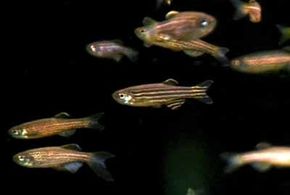Aquarium Lighting
Aquarium lighting makes it possible to fully appreciate the beauty of the fish and the aquascaping in the tank. It also provides necessary illumination if you choose to use live plants.
Assuming the location for the tank has been chosen carefully, tank lighting will allow you to control the amount and duration of light the aquarium receives. For all these reasons, the aquarium hood, which contains the light fixture, is an essential component.
Advertisement
The hood fulfills several functions in addition to providing illumination for the tank. It minimizes the evaporation of tank water and it prevents dust and other items from entering the tank easily.
It also stops most fish from jumping out of the tank. Some fish, however, manage to jump through even very small spaces in the hood, in places where equipment is set up.
The back of most hoods contains precut openings for filters and heaters. These openings can be pushed or cut out as needed. If they are larger than the items they are intended for, a fish may find its way through the extra space. As a general rule, this only happens if the fish is already under considerable stress.
Many hoods come equipped to accept incandescent light bulbs. These can be adequate for illuminating the tank, but they do have drawbacks.
Incandescent bulbs generate quite a bit of heat, only adding to the problem of keeping aquariums from overheating during the warmer months. The bulbs don't last very long and can use a lot of electricity, especially in a larger tank where several of them are required.
For these reasons, a hood with a fluorescent fixture already installed or a kit to convert the hood to fluorescent lighting should be used. Despite their higher initial cost, there are several advantages to fluorescent tubes.
They run cooler, last much longer, and use much less energy than incandescent bulbs. They are also able to supply enough light to successfully grow live plants.
Many hoods, however, do not have room for more than one fluorescent tube, which may not be enough to keep live plants. The usual recommendation for lighting is three watts of light for each gallon of water. Although inexact, this guideline is a good indicator of the minimum wattage needed.
A second light fixture will often be necessary. The exact requirements of your aquarium will depend on its size, the number and type of plants it has, and the number and type of fish it has. It is best to consult your regular dealer about this so you can tailor the lighting to your exact needs.
There are actually two concerns with light: intensity and duration. If there is insufficient intensity, leaving the lights on longer will not help. One sign of inadequate light is that plants will have long stems but few leaves.
In a properly lit tank, the lights need only be on for eight to ten hours. It should also be noted that some fish do not like very bright light, and all fish need to have regular periods of darkness, just as they do in nature.
Go to the next page to learn about aquarium plants.
